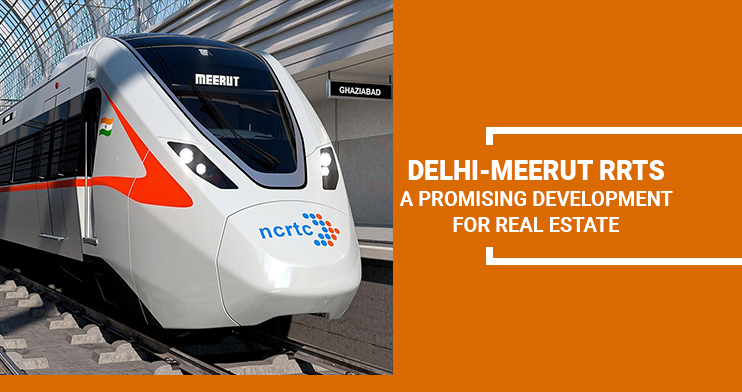
Delhi-Meerut RRTS – A Promising Development for Real Estate
The Delhi-Meerut Regional Rapid Transit System (RRTS) is one of India's most ambitious infrastructure projects, aimed at transforming the way people travel between the national capital, Delhi, and the historical city of Meerut. With the promise of faster, more efficient, and environmentally friendly transportation, the RRTS project has been eagerly anticipated by commuters and urban planners alike.
The Delhi-Meerut RRTS boasts several key features that make it a game-changer in the realm of public transportation:
High-Speed Connectivity: The RRTS is designed to operate at a top speed of up to 180 km/h, significantly reducing travel time between Delhi and Meerut.
Fare: The NCRTC decided to revise the fare chart of the Delhi Meerut Rapidx train to make it more competitive than existing transportation modes. The estimated fare will range between Rs. 3 to 4 per km. Commuters may have to pay around Rs 170 to 200 for travelling between Anand Vihar and Meerut Central. The fare structure will be fixed based on research, considering international standards and existing fares of other public transport options.
UPI-enabled Ticket Vending Machines (TVMs) will be implemented for the first time in India. In addition to this, passengers can also buy tickets using cash, credit/debit cards and national common mobility card (NCMC) wallets. Users can also pay for tickets through the RAPIDX Connect mobile application by generating a digital QR code.
Comfortable and Modern Stations: The project includes state-of-the-art, elevated stations equipped with modern amenities, ensuring a comfortable and convenient journey for passengers.
Multi-Modal Integration: The RRTS system will seamlessly integrate with existing transportation modes, such as the Delhi Metro and city buses, facilitating smooth transfers for passengers.
Number of Stations: The RRTS line between Delhi and Meerut is expected to have multiple stations along its route. However, the exact number of stations may vary based on project updates and changes during construction. The stations are strategically located to serve densely populated areas and facilitate easy access for commuters.
Maximum Luggage Allowance: The maximum luggage allowance on the Delhi-Meerut RRTS is subject to the guidelines and policies set by the operating authority. Typically, public transit systems have restrictions on luggage size and quantity for safety and convenience reasons. Passengers are encouraged to check with the RRTS authority for specific luggage regulations and allowances closer to the launch of the service.
Benefits for the Real Estate Industry
1. Enhanced Connectivity: The Delhi-Meerut Metro will not only reduce travel time but also improve connectivity between Delhi and Meerut. This enhanced connectivity will have a positive impact on the real estate sector, attracting investors, homebuyers, and businesses to areas along the metro route. Regions such as Ghaziabad, Noida, and Meerut are expected to experience increased demand for housing and commercial spaces, resulting in a potential boom in real estate development.
2. Appreciation of Property Values: The availability of metro connectivity has long been associated with an increase in property values. As the Delhi-Meerut Metro becomes fully operational, properties located near the metro stations are likely to witness a surge in demand and, subsequently, appreciation in value.
3. Infrastructural Development: Along with the metro network, the Delhi-Meerut corridor will witness significant infrastructural development. The expansion of roads, improvement of local transportation systems, and the creation of supporting amenities and facilities will further fuel real estate growth in the region. This comprehensive development will attract both commercial and residential projects, thereby generating employment opportunities and enhancing the overall socio-economic landscape.
4. Improved Livability: The Delhi-Meerut Metro will provide commuters with a reliable, cost-effective, and considerably faster mode of transportation. As a result, individuals can choose to live in the outskirts of Delhi or Meerut, away from the city's congestion, while still enjoying seamless connectivity to major employment centers and other parts of both cities. This improved livability factor will lead to an increased demand for housing projects in the vicinity of the metro stations.
In conclusion, the Delhi-Meerut RRTS is a transformative project that promises to enhance connectivity and accessibility between Delhi and Meerut. With its high-speed operation, modern amenities, and commitment to sustainability, it represents a significant step forward in the development of India's transportation infrastructure. Stay updated with the latest news and announcements to make the most of this revolutionary transit system once it becomes operational.
Leave a Reply
Your email address will not be published.



Comments